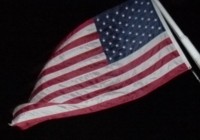Savannah Georgia
Savannah was the first British settlement in Georgia, named after King George II and thus the onetime State capital and one of the oldest cities in North America. It has since been eclipsed both as capital and in size by Atlanta but retains a southern charm that Atlanta lacks.
It was established on the Savannah river by James Oglethorpe, a social reformer and philanthropist, to provide land and a living to the 'worthy poor' of Britain who at that time were spilling out of the debtors prisons. Among the crops that were brought from London and trialled by the would-be farmers was cotton. This quickly became a cash crop in the south of North America feeding the cotton mills of Manchester and Birmingham. But it was soon realised that the colony's ban on slavery would need to be lifted if the new entrepreneurs were to compete with the nearby Spanish and French slave states that had begun to grow cotton in competition. London duly complied and slavery thus became essential to economic success in this 'free market'.
Savannah is a very attractive city with pleasant parks and some fine old houses including the South's oldest public art museum: "with American & European works spread over 3 themed buildings". The contemporary Jepson Center was featuring a Rodin exhibition which we decided not to fit in to our schedule, arguing that Rodin's work is replicated in many places. So we parked the car midtown and walked the leafy streets to the river. Very pleasant.
Historic Savannah - Click on this picture to see more
Wormsloe
Wormsloe is an Historic Estate established in 1736 by Noble Jones, one of James Oglethorpe's settlers, on Skidaway Island. Noble Jones was the sort of 'jack of all trades' needed to establish a new settlement. He was both innovative and well educated with: carpentry; surveying and mathematical skills; people skills; and hands-on technical knowhow. It was he who surveyed and laid out the city of Savannah for Oglethorpe. He later became a member of the Royal Council and a senior Justice.
In many ways it was Noble Jones who was responsible for the success of the colony as he took charge when Oglethorpe was not present. Like Oglethorpe he was opposed to slavery but in the end got overruled when the new settlers appealed to London. Australians may remember that Governor Macquarie was similarly overruled and recalled when new settlers appealed to London. Not in the interests of slavery but for the reverse, his policy of emancipating and elevating former convicts to positions of authority over free settlers.
Initially Noble Jones built a fortified house on Skidaway Island that commands the river flats. Again there is an Australian connection. He manufactured lime by mining and firing aboriginal shell middens that had accumulated over thousands of years of oyster and other shell fish gathering by the natives. This was then combined with more shells and sand to produce a soft concrete called 'tabby' that's particularly effective in absorbing musket fire. Later he built a more commodious family home that still stands. There's even a cricket pitch. Probably one of the first in North America.
He's buried near the original fortified house, overlooking the river.
Wormsloe Historic Estate - Click on this picture to see more
From Savannah we would return to South Carolina to Charleston to drop off the car and catch a flight to New Orleans.

